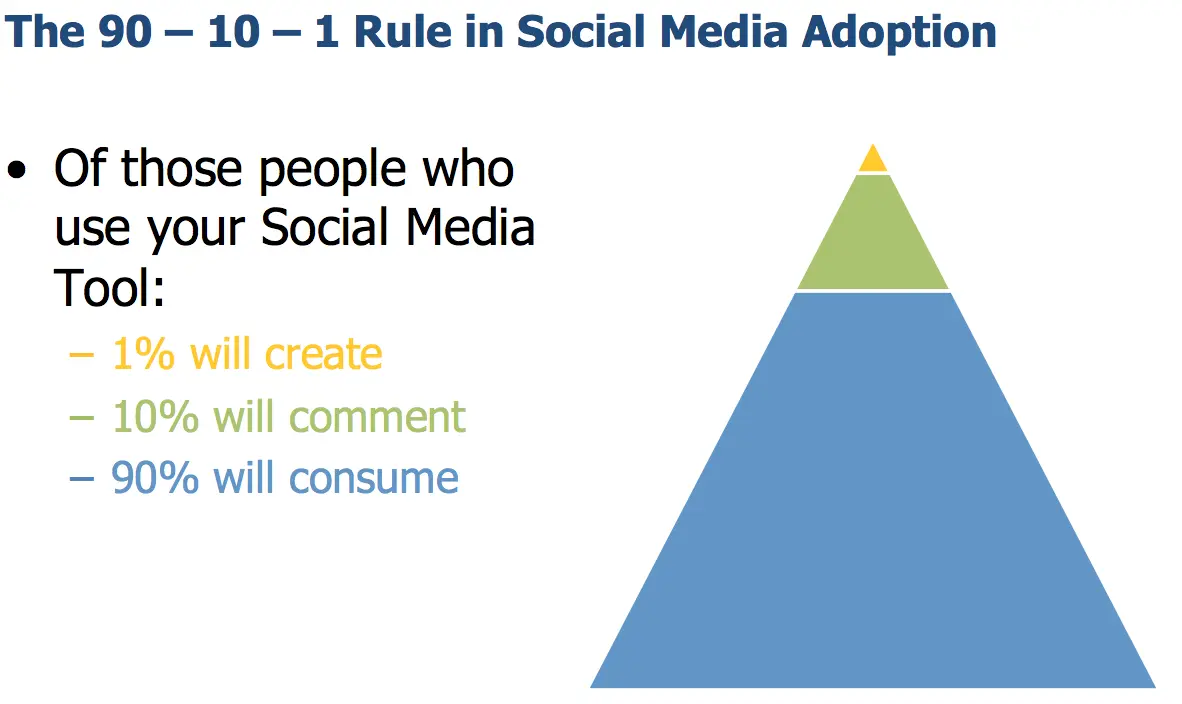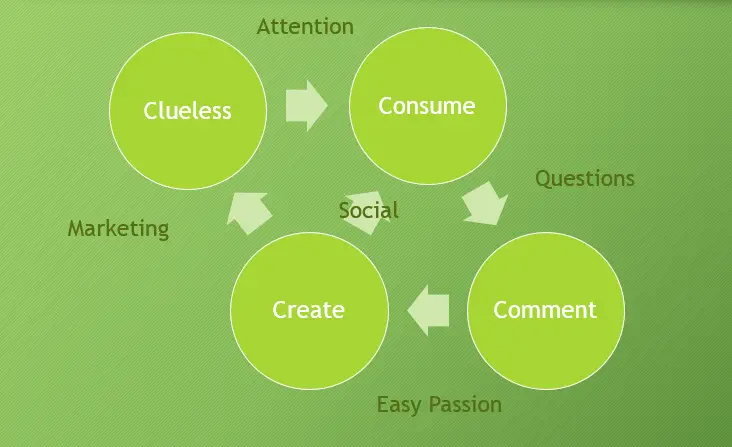

The first is that there are three basic types of people. There are people who start conversations. There are people who participate in conversations. Finally there are people who listen to conversations.
Think about the last time you were at a party or with a large group. How many people participated in the organization of the event? Those are your conversation starters. Think about all the websites you have been to. The articles are created by someone. Those are the conversation starters.
Now at this party or family event think about all the people who are standing around in groups some start conversations. “Who saw the game last Saturday?” “Did anyone watch Transformers?” Each of these questions are put out there by the conversation starters. The people responding are in the people who are willing to take part in the conversation, but don’t feel like they can start the conversation.
Finally at this party we have people who hover from group to group to group, listening to what people are saying and taking it all in. These people are your observers. They want to hear what others are saying but, for various reasons, don’t want to participate in the conversation.
Now as I’m sure you are aware of, these roles change. At some point in the evening you move from one category to another taking different roles as the conversation progresses.
So what does this all mean to someone who is running a website? You must first have a place where you can start conversations. You then need a way to have people participate in the conversation, and finally you must have a way for people to just ‘lurk’ watching the conversation take place.
Now lets say you have all these tools. You have a blog which allows you to post. You have a commenting system on that blog. Finally, you don’t have any restrictions on people reading your blog. What next?




Comments
With an account on the Fediverse or Mastodon, you can respond to this post. Since Mastodon is decentralized, you can use your existing account hosted by another Mastodon server or compatible platform if you don't have an account on this one. Known non-private replies are displayed below.